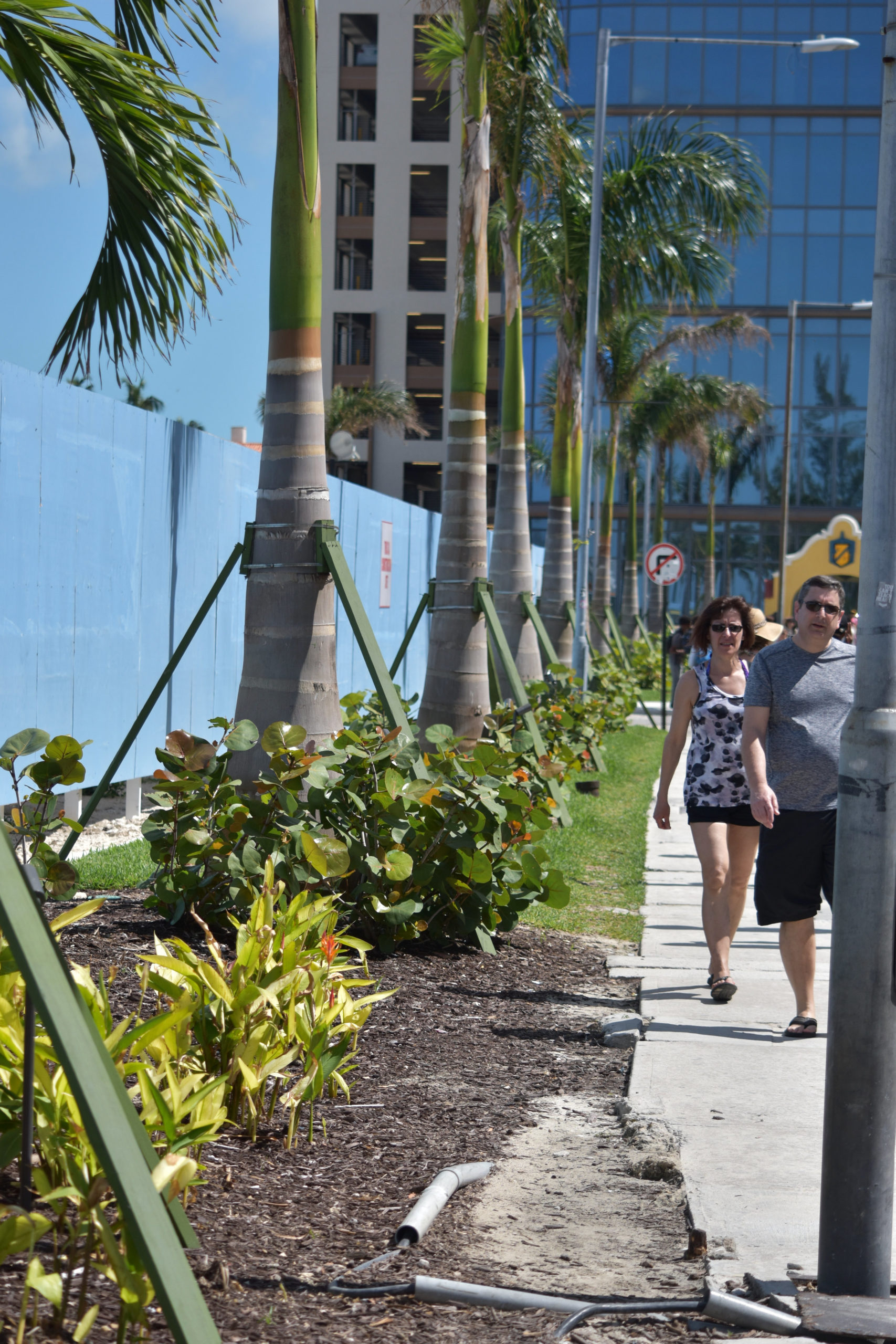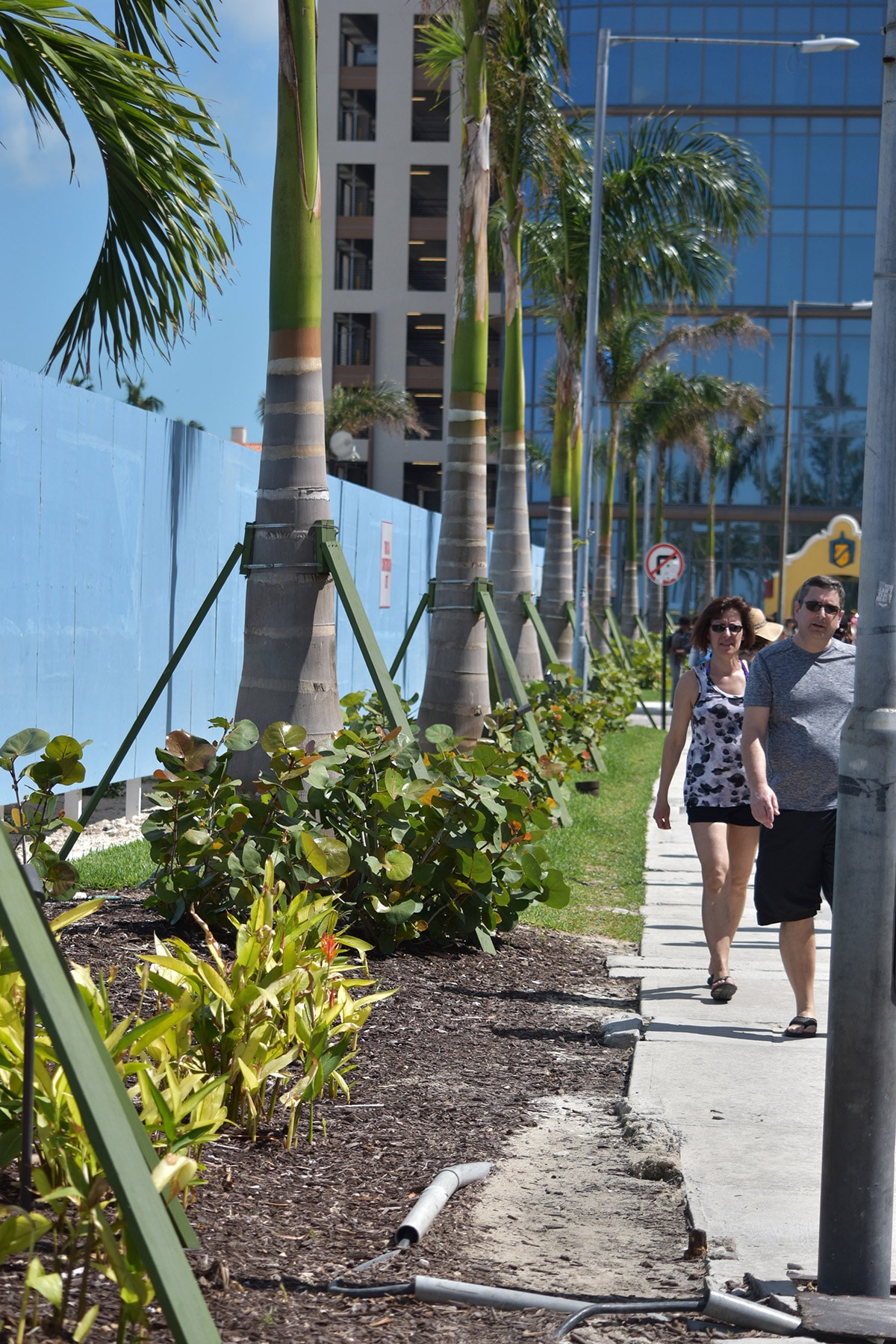
By Dr. Ian Bethell-Bennett
University of the Bahamas
We usually think of aesthetics in two ways: either the aesthetic pleasure of a work of art or the aesthetics of a period, style or artist. Time has moved on, however, and we are now forced to contemplate differently: the juxtaposition of unrelated ideas/concepts fit into a frame that gives them another meaning or gives us pause. It can be difficult to understand or grapple with the idea of oxymoronic contrast. However, in our daily lives we tend to witness the collapse of modernity in its premise of prosperity struck out by the super prosperous: the contrast between the local and the global.
Though already global, Caribbean art is posited against an international migratory aesthetic. If we look around us, we see images that speak a language of the everyday and the fantastic. We see ramshackle and we see dilapidation alongside prosperity. Old neighbourhoods are boasting great disparities, where there was once common neighbourly similarity. Now we see contrast asymmetry, that is, where we once saw calm uniformity, we now witness disconnection. Perhaps this is useful for us – to see the underside of progress through art, but for many of us, this threatens our identity and so our eye refuses to perceive the nuances hidden in plain sight.

Debt aesthetics are subtle and revealing as fences and signs rise claiming shifting sovereignty: Old South Ocean Property soon to be re-privatised
There is a growing aesthetic of modernist collapse or disavowal and debt. Most people living in the grittiness of such collapse do not readily perceive it. Disembodied boats fleeing across channels or cuts, rough, deep, dark and perilous. Migrants stepping into a new frontier of possibility and potential. Blues awash on a canvas of other blues, green and whites. What we do not see are the aesthetics of migration but the result of a moment that has continued to ripple affect into the present. Sam Durant (multi-media artist) and Catherine Lord (artist, writer, curator, social activist and professor) focus on migration aesthetic in the Essays in Migratory Aesthetics: Cultural Practices Between Migration and Art-Making (2007) where they ask questions that include:
“But what role does aesthetics play in a world in which goods, labour and capital are seemingly becoming ever more movable and movement itself becomes a sign not only of individual agency but also of powerlessness, where there is no choice but to move? How does aesthetic production reflect and contest the unequal power relations that underpin the myriad movements occasioned by globalization”? (2007, p. 11)
However, it is not just about the aesthetics of migration or those disembodied vessels and physical bodied humans producing new signs and meanings in a different cultural context. It is also about the aesthetics hidden from view. I want to refer to this as the aesthetics of debt. This is a distinct use of the term from that having been coined by Debt: Occupy, Postcontemporary Art, and the Aesthetics of Debt Resistance as published in the South Atlantic Quarterly: Religion and the futures of blackness (2013) that arose from the occupy Wall Street movement. It is where things have fallen apart, but the eye skips over the collapse, (also visible in the devastation of life and the natural environment). This is the loss of the coast to high-rise foreign development as seen on Bay Street and the erasure of local histories in favor of Disney dreams. We are encouraged to see ourselves as others see us, the phenomenon of double consciousness or double vision. The aesthetics of debt and migration can be easily looped into a discussion of double vision/double consciousness. We see the collapse of the modernist dream and the post modernist development but we also see the possibility in the New Riviera. An art scene that is saved for others but sold to us. We are consolidated into an other view. Fixed into the space of coastal erasure, we are no longer seen. As this space climbs, the former space of neighbourhood partial or almost symmetry, slides. The Sea Breeze of the 1980s is no longer: fraught now with contradictions and incongruence, just as complicated as the migratory movement of globalization and the nuanced readings of debt, where we do not see debt, but the double conscious view. Obfuscating one part of the story reveals another.

The invisibility of Debt: China’s purchase of the Nassuvian coastline: Downton Nassau
The discussion around Ragged Island resilience juxtaposed with the creation of the new Colonial Hotel and the erasure of Fort Nassau; the imagery could not be more arresting. The collisions of the new with the old, the global with the local, the debt with the possibility or the post-post-modernity of ‘retransing’ the transnational, where states come to own other states’ sovereign borders and frontiers. Inhabitants of the space, re-imagined, are no more the wiser though arguably able to see the double image.
This is, much like reading Blue Curry’s ‘New Riviera’ alongside this year’s Double Dutch exhibition “Hot Water”, especially ETA, an exercise in peeling onions. The beauty is often missed as the skin is removed, layer after thin, translucent layer. Onions are complex yet seem utterly revealing. The visual language of sight and double sight must be viewed through the lens of migratory aesthetics that run parallel with debt aesthetics. Whenever we read the visual language of migratory aesthetic we must ask about the debt aesthetic held in its belly. The disembodied vessels that secret Haitians, Chinese, Russians, Brazilians into the country are the same images available on global television screens but without the sound and the fury of the lives held therein.
Though perhaps empty of symbolism, water tanks are a necessity in water-starved islands of the Southern Bahamas. Those empty water tanks provide precious cargo that like the holds of those disembodied vessels, displace fears to come into potential. Migratory and Debt aesthetics intertwine with the possibility of progress through unbridled but resident-driven innovation and design.